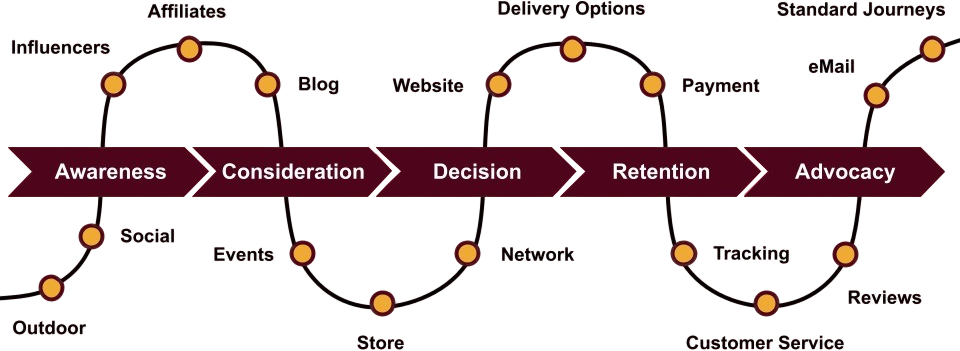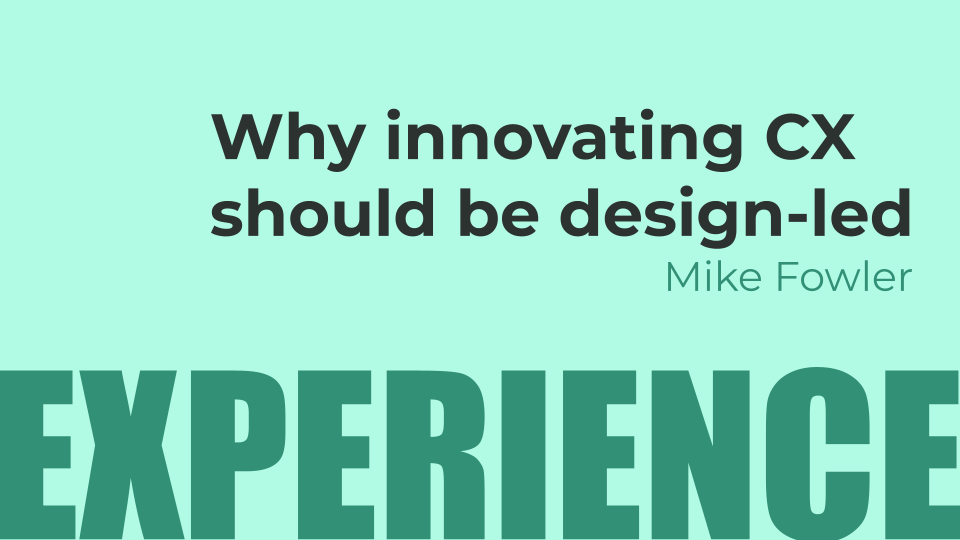Why innovating CX should be design-led

I've just returned from Sydney and an amazing Online Retailer Conference & Expo. For the first time, I feel that we are making progress across unified commerce. The event touts itself as the #1 meeting destination for the eCommerce industry to access the strategic insights & solutions to make an impact - and it is! There's just so many exciting revelations across omnichannel and I suspect we will see a move to a more pronounced omnichannel event.
While at Online Retailer, I was fortunate to deliver a keynote across Customer Experience and why innovating CX successfully should be design-led.
How customers engage with your brand.
Engage could mean so many things. Interact, transact, touch ... all of the touch points from both sides of the table make up the customer experience.

Everyone has one.
Total sum of all interactions.
Not a snapshot in time.
CX is fluid and evolving.
All companies and brands have a customer experience regardless of whether they sell products or services or what vertical they occupy. When we combine all interaction touch points - the cumulative total results in the CX. It's ever changing against perceptions, expectations, possibilities ... its fluid.
Touch points (Channel agnostic)

“Follow the customer, and you will never have to look for growth.” - Sir Terry Leahy, former Tesco CEO
Design Thinking

Principles of Design Thinking
- Empathy
- Expansive Thinking
- Experimentation
These principles are expressed in many different words - having similar meanings.
Empathy, the human-centred thinking. Putting the customer at the heart of the design and decision making process. Thinking laterally, vertically and from different perspectives & possibilities. In recruitment, this goes against the validity of hiring for "fit". Hire for diversity - diversity of thinking. If you want to truly innovate, you need as many perspectives as possible in your design process. Experiment and iterate - implementation.
Foundations of Customer Experience (CX)
- Design Sprints
- Journey Mapping
- Jobs to Be Done Framework
- Roadmap
Design sprints are week long formal processes and the core of design thinking. Journey mapping is the visual representation of the customer journey - all of those touch points.
If I had to pick one area that will move the needle more than anything else, I'd point to the Jobs to Be Done framework. In principle, it states that we buy products and services to do a "job". Once we understand why we hire a coffee or a v-neck sweater and what job is being done, we can start to understand who the competitive items and forces are and identifying much larger cohorts that need similar jobs to be done. Learn this. Adapt it to sales, marketing, product management ... it is incredibly useful.
Then roadmap it, hit the GANTT charts and execute.
What are the next Steps to innovate the CX?
Establish a CX platform that enables your most valuable customers and those who serve them with the utility they need to complete their job to be done and pick up where they left off.
Prioritise flexible solutions that support fast and cost effective iteration.
Bring the outside in, constantly gather feedback and insight from customers to drive urgency and focus on what’s most valuable to them.
Establish measures of CX value contribution that are understood and shared across the organisation, for example customer equity or good will.
View or download the presentation [link]















About Mike Fowler
Mike is an eCommerce veteran, senior leader & growth strategist for some of Australia's best retailers. Formerly at Afterpay as Director of Merchant Services APAC, General Manager and founder of the growth team at Mosaic Brands (Noni B Group) developing and launching 9 iconic multi-category online marketplaces, including: Noni B, Rockmans, Millers, and Rivers, as well as Head of Digital at Blue Illusion. Member of the Australia Post Customer Advisory Group with more than 15 years experience in helping retailers leverage eCommerce, CX, payments, & logistics opportunities to maximise growth.



